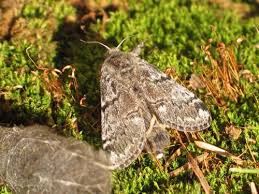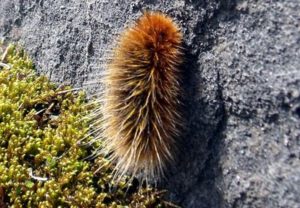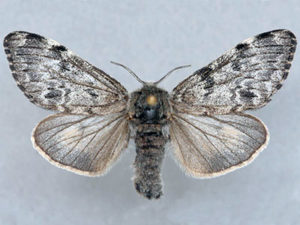Arctic Woolly Bear Moth (Gynaephora groenlandica)
The Arctic woolly bear moth is a unique species found in the extreme cold of the Arctic, able to withstand almost -70C. It takes a long time for this moth to go through its life cycle. The larval stage takes around seven years, each year representing a different instar.
John Ross discovered it during his Arctic expedition on 16 June 1832 on the beaches of Fury Island in Canada.
Scientific Classification
- Family: Erebidae
- Genus: Gynaephora
- Scientific Name: Gynaephora groenlandica
Description and Identification
Caterpillar
The larvae are large, covered in soft hair. They mostly have a tan-brown body, though the color could vary. On their eighth abdominal segment, there is a unique hair tuft that is shaped like a pencil.
The arctic woolly bear moth only spends 5% of its larval stage feeding. The rest is dormant and frozen in ice. They also stay on rocks rather than vegetation as it thaws out quicker and allows them to recover quickly. It may take them almost 14 years to reach the adult stage.
Pupa
Once fully mature, these caterpillars begin pupation at the start of the summer by weaving a silk cocoon, forming a hibernaculum. The cocoons are double-layered, allowing a pocket of air to exist between them. The mortality rate of the moth at this stage is 13%.
Adult Moth
Sexual Dimorphism: Present.
Males usually fly, while females do not.
Color and Appearance
They have a pale gray body.
Forewing: When opened,the wings are pale gray with black-and-white streaks. When closed, the grayish background remains unchanged, though the streaks are not distinctly visible.
Hindwing: When opened, the wings are a transparent pale gray. When closed, the color is the same.
Average wingspan: Not recorded
Flight pattern: Erratic
Season: Summer
Egg
The eggs are laid in the summer, measuring around 1.6 mm. They are generally laid on the ground or vegetation close by.
Quick Facts
| Distribution | The High Arctic including Greenland, Wrangel Island in Russia, and Ellesmere Island in Canada |
| Habitat | Extremely cold environments |
| Predators | Parasitic wasps, some birds |
| Lifespan of Adults | 2 weeks |
| Host Plants | Mainly the Arctic willow, sometimes the purple saxifrage, and the arctic avens |
| Adult Diet | Does not feed |
Did You Know
- To keep themselves from freezing, the caterpillars convert the sugar in their body into a form of antifreeze.
- It has a symbiotic relationship with the collared pika, as the leftovers of the caterpillar are delicious for the small mammal.
- This unique moth featured in the 2011 documentary show of BBC, Frozen Planet.
Scientific Classification
- Family: Erebidae
- Genus: Gynaephora
- Scientific Name: Gynaephora groenlandica




